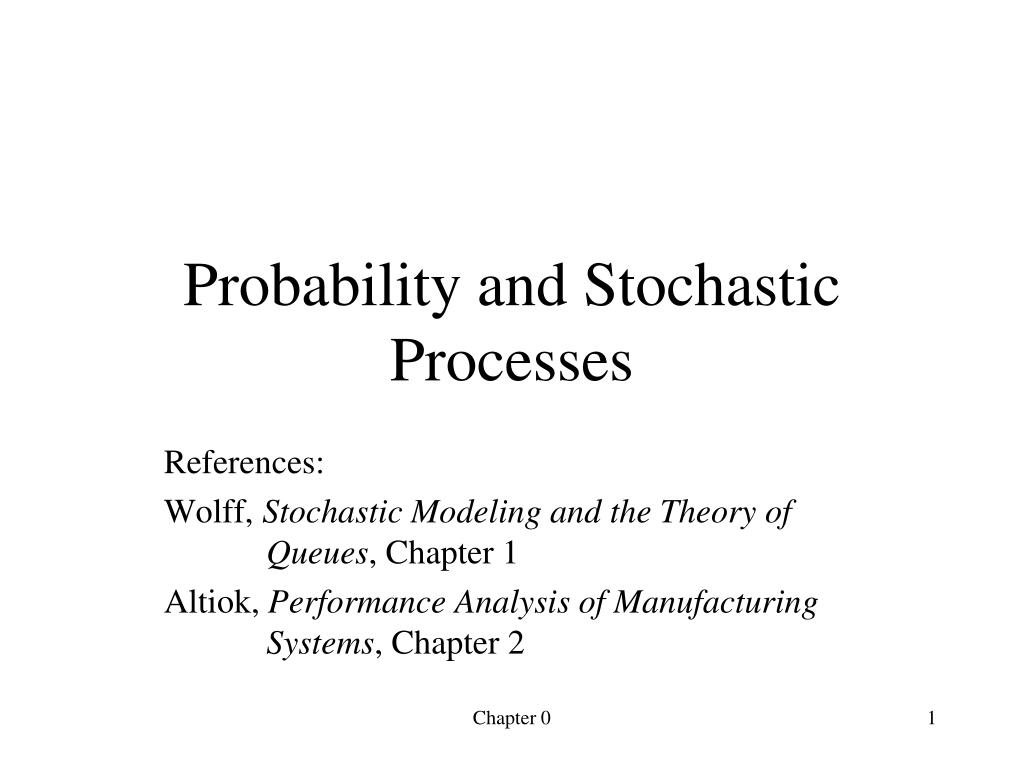


Pretty much all of statistics can be framed in terms of functional analysis - a space of random variables with variance as a norm forms a Hilbert space. Probability and Stochastic Processes by Yates Roy from . Other than the basic probability theory, my goal was to in- clude topics from two areas: statistical inference and stochastic processes. I think it’s actually quite an accessible field once you have the prereqs, and it’s also one of those things that you see literally EVERYWHERE. If that norm also gives an inner product structure a la the dot product in R n, then we call it a Hilbert space - those are the really useful ones. This also lets us talk about topology, since the norm induces a metric topology. “Complete” in this sense means that every Cauchy sequence converges in norm. The most basic object of study is something called a Banach space, which is a normed vector space that is complete with respect to the metric induced by its norm.

Recall: the ijth entry of the matrix Pn gives the probability that the Markov chain starting in state iwill be in state jafter nsteps. Note that the columns and rows are ordered: rst H, then D, then Y. Probability Models for DNA Sequence EvolutionLectures on Probability. following transition probability matrix : P. In short: it’s infinite dimensional linear algebra. Essentials of Stochastic Processes Stochastic Calculus Probability Probability. Not really, no - there are a ton of books on the subject, but the field itself isn’t what I’d call ‘comprehensible’ without at least undergrad level analysis and topology.
#STOCHASTIC PROBABILITY SERIES#
R-bloggers - blog aggregator with statistics articles generally done with R software. : Stochastic Processes (Wiley Series in Probability and Statistics) (9780471099420) by Ross, Sheldon M. This course is an advanced treatment of such random functions, with twin emphases on extending the limit theorems of probability from independent to dependent variables, and on generalizing dynamical systems from deterministic to random time evolution. Kaggle 1 2 3 Informally, this may be thought of as, 'What happens next depends only on the state of affairs now. Self posts with throwaway accounts will be deleted by AutoModerator A Markov chain or Markov process is a stochastic model describing a sequence of possible events in which the probability of each event depends only on the state attained in the previous event. Memes and image macros are not acceptable forms of content. Just because it has a statistic in it doesn't make it statistics. Please try to keep submissions on topic and of high quality. They will be swiftly removed, so don't waste your time! Please kindly post those over at: r/homeworkhelp. This is not a subreddit for homework questions. Simulation methods.All Posts Require One of the Following Tags in the Post Title! If you do not flag your post, automoderator will delete it: Tag The evolution is governed by some dependence relationship between. Stochastic models in epidemics, finance, population biology, genetics, reliability & telecommunications. Stochastic processes are probabilistic models for random quantities evolving in time or space. Markov chains in discrete & continuous time. Course descriptionĭescription of probability models. Overview: These lectures encompass a full-year course in probability theory and stochastic processes, as taught at the University of California, San Diego (as Math 280).These lectures were produced in the 2020/2021 school year, in the midst of the Covid-19 pandemic. although evidence suggest that probability weights and utilities are often. Please Note: Course profiles marked as not available may still be in development. Stochastic representation decision theory: How probabilities and values are. Current course offerings Course offerings


 0 kommentar(er)
0 kommentar(er)
